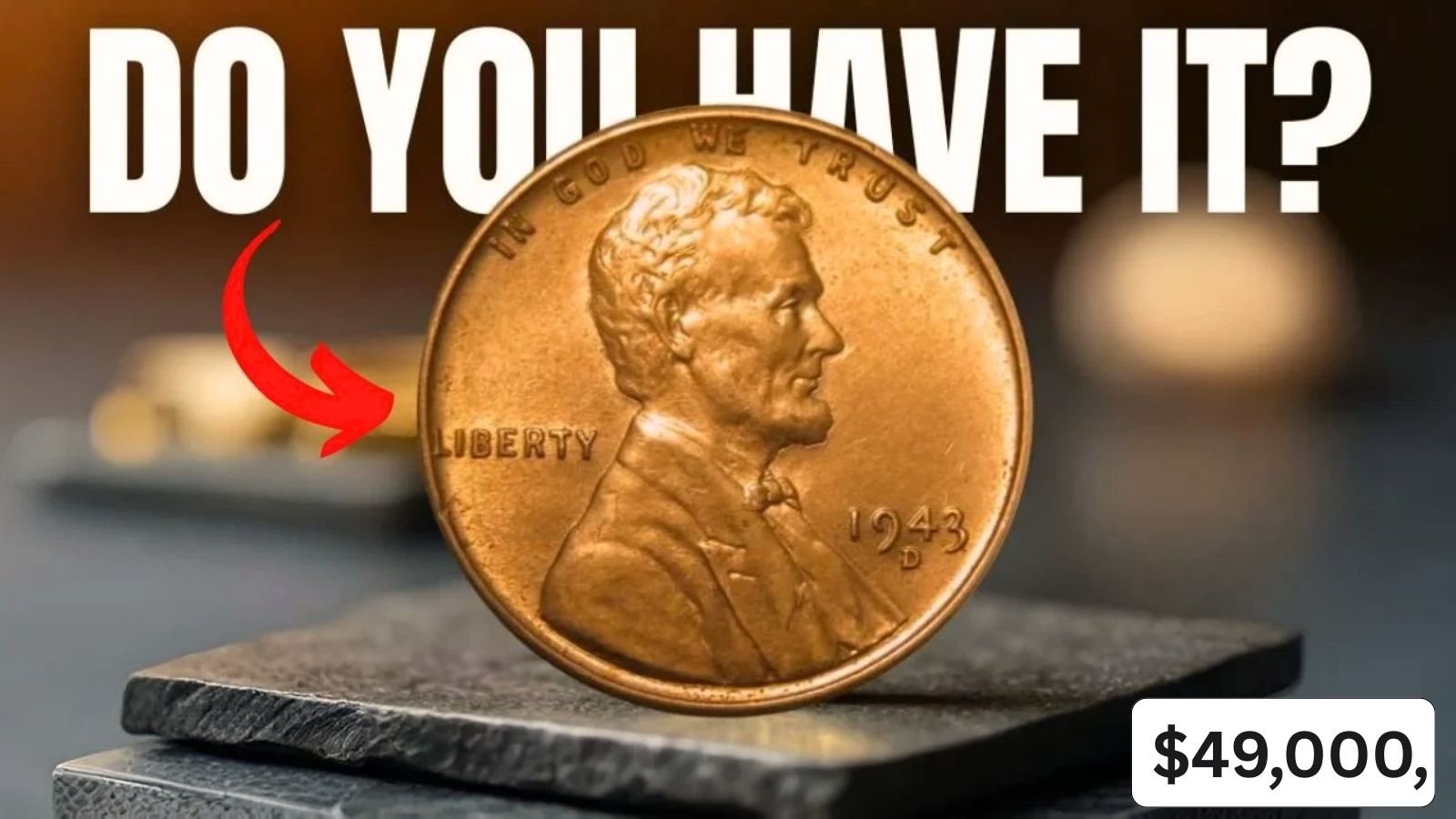A Surprising Discovery
Picture this: you’re sorting through loose change from your pocket, and a dingy old penny catches your eye. Most folks would toss it aside, but what if that penny is worth $49,000? That’s the story with the rare 1943 Lincoln Wheat Penny made of copper. During World War II, pennies were supposed to be steel to save copper for the war effort. But a few copper ones slipped through by mistake, and they’re super valuable now. Collectors dream of finding one, and believe it or not, some might still be floating around in everyday cash.
What Makes the 1943 Copper Penny Special
Back in 1943, the U.S. Mint switched to steel pennies coated in zinc because copper was needed for bullets and stuff. They made over a billion steel ones, but about 20 copper pennies got made by accident, maybe from leftover blanks. These errors make the coin a big deal in the coin world. Experts say fewer than 20 are known to exist today, and one even sold for over a million bucks. The Lincoln Wheat design, with Abe on the front and wheat stalks on the back, ran from 1909 to 1958, but this year’s mistake stands out.
How to Identify This Rare Coin
Spotting a 1943 copper penny is pretty straightforward if you know what to look for. First, check the date: it has to be 1943 with no mint mark or one from Denver or San Francisco. The color should be brownish or reddish, not silver like the steel ones. Grab a magnet; if it doesn’t stick, it might be copper. Weigh it too, around 3.11 grams, while steel is lighter at 2.7 grams. Don’t clean it, as that can lower the value. If it looks right, get it checked by pros.
| Feature | Steel 1943 Penny | Copper 1943 Penny |
|---|---|---|
| Color | Silvery gray | Brownish red |
| Magnetic | Yes | No |
| Weight | 2.7 grams | 3.11 grams |
| Material | Zinc-coated steel | Bronze copper |
Why It’s Worth So Much
The value comes from how rare it is. With so few out there, collectors pay top dollar. A 1943 copper penny in okay shape can go for $49,000, while pristine ones fetch up to $1.7 million at auctions. One from Denver sold for $1.7 million back in 2010, and prices keep climbing. It’s not just the metal; it’s the history and the mistake that make it exciting. In lower grades, like if it’s worn from use, it might still bring in $40,000 to $100,000, depending on the market.
| Condition | Estimated Value |
|---|---|
| Good (worn) | $49,000+ |
| Mint State | $100,000 – $1,700,000 |
Where You Might Find One
These pennies could still be in circulation because they look like regular coins at first glance. People have found them in change from stores, old jars, or even vending machines. Since they were made over 80 years ago, check grandma’s coin collection or buy rolls of pennies from the bank. The odds are slim, like one in a billion, but stories pop up now and then of lucky finds. Keep an eye on flea markets or online sales too, but watch for fakes.
What to Do If You Spot One
If you think you’ve got one, handle it with care. Put it in a soft holder to avoid scratches. Take it to a coin shop or send it to grading services like PCGS or NGC to confirm it’s real. They’ll grade it and slab it, which can boost the value. You could sell it at an auction or to a dealer for quick cash. Just don’t spend it; that $49,000 penny could change your life. Always get a second opinion to make sure it’s not a plated fake.
Keep Hunting for Treasures
The 1943 copper Lincoln Wheat Penny shows that everyday items can hide big treasures. Next time you’re dealing with change, take a closer look. You never know when a simple penny might turn into a windfall. Coin collecting is fun and can pay off, so start checking those dates and colors. Who knows, maybe you’ll be the next person to find one still kicking around in circulation.
